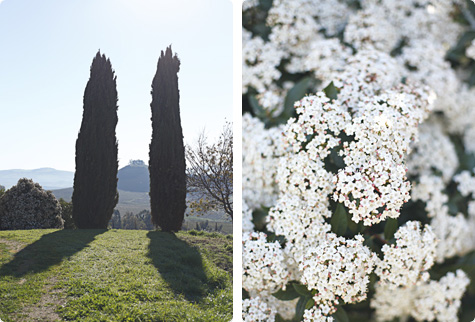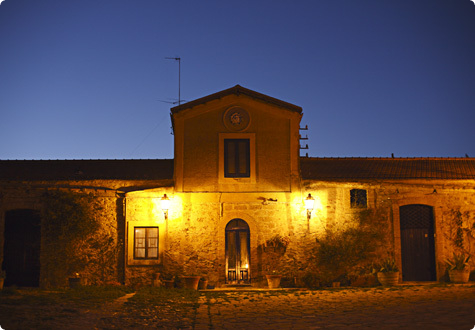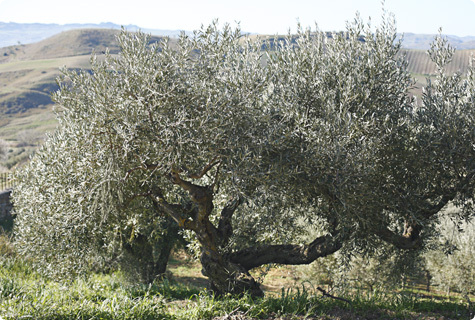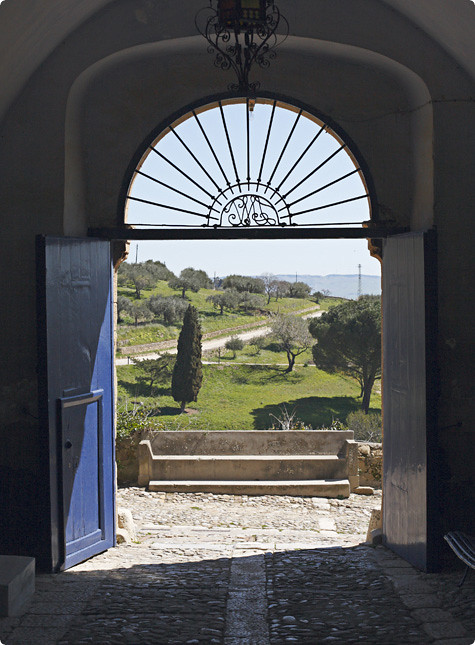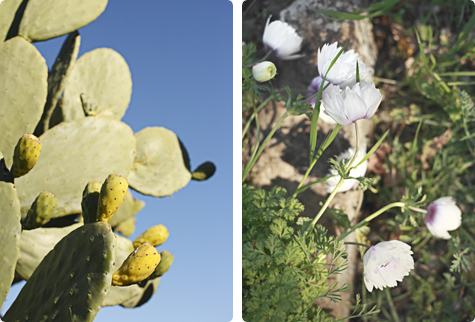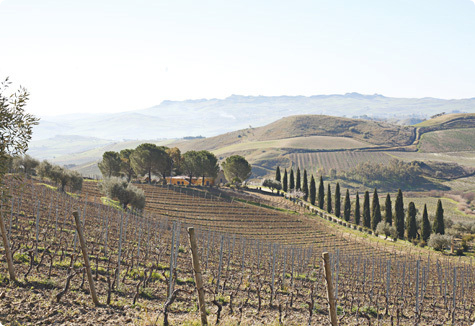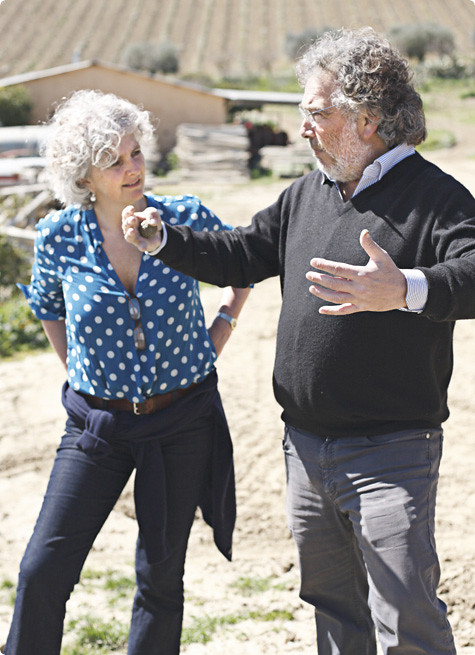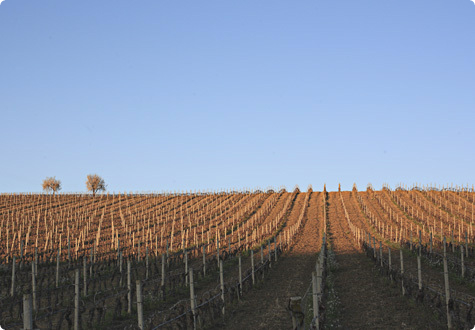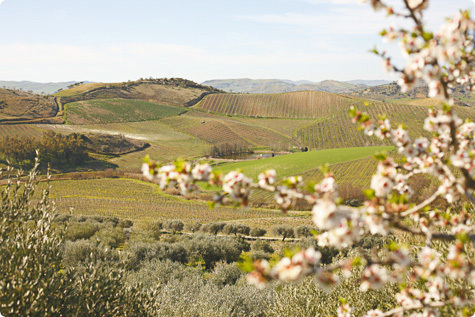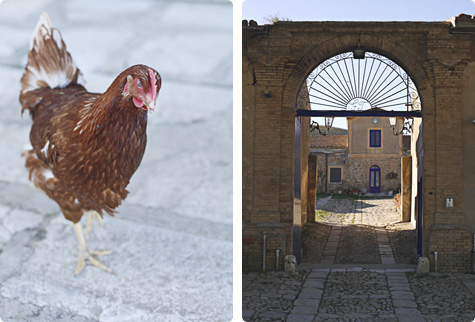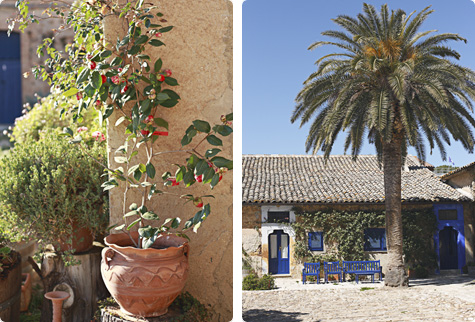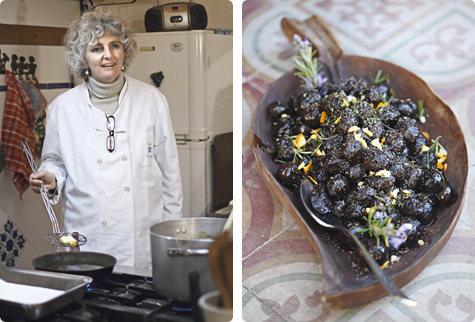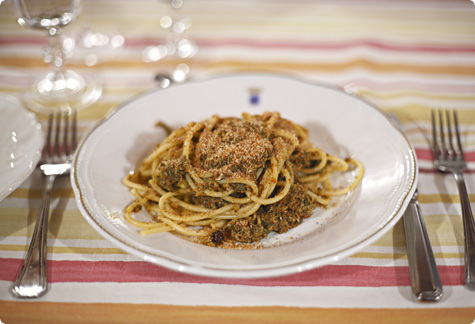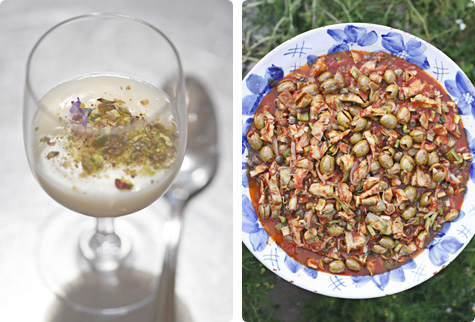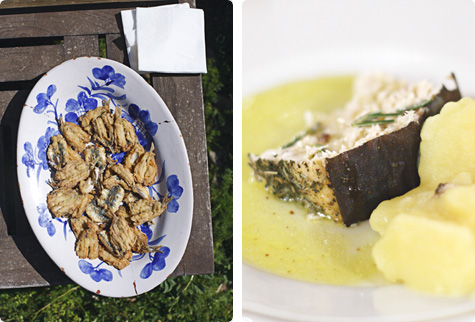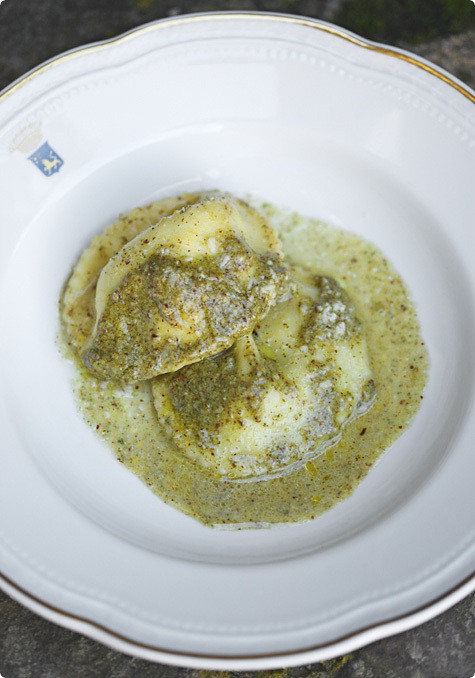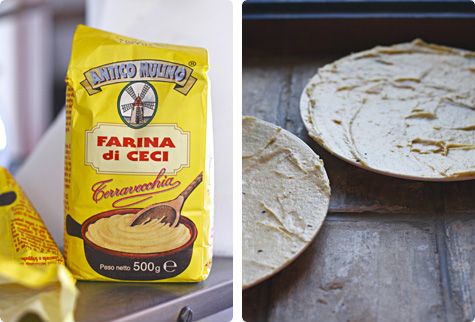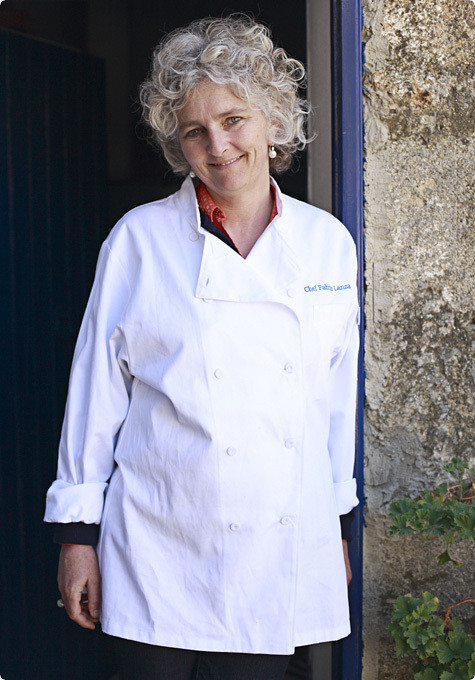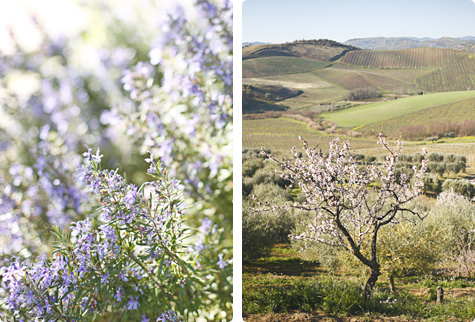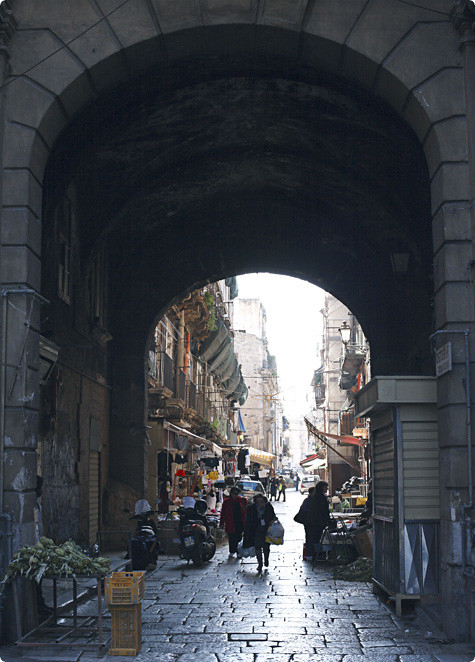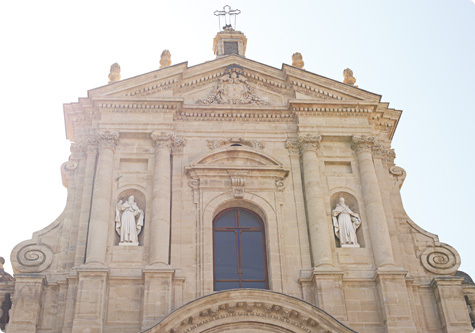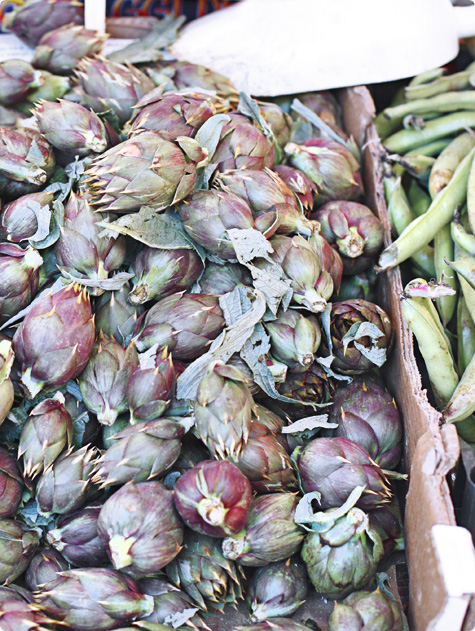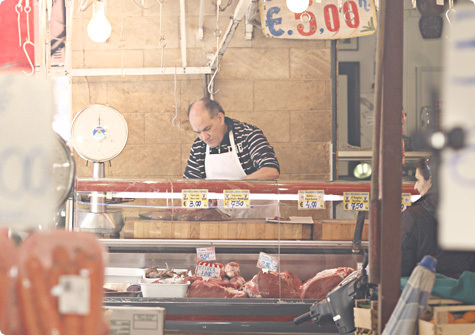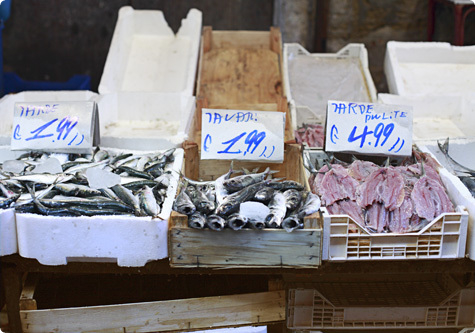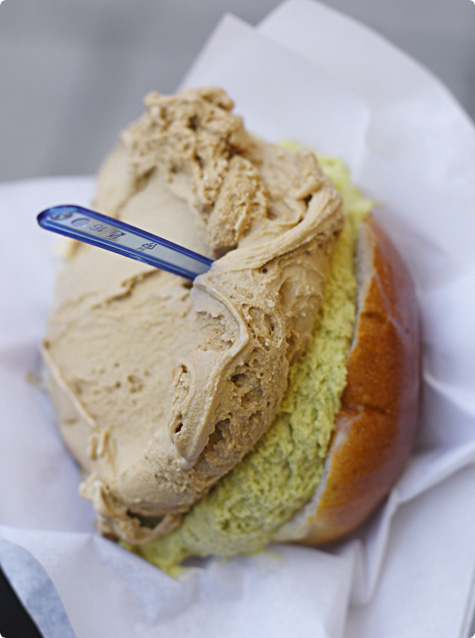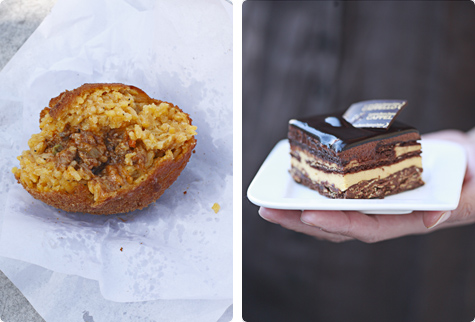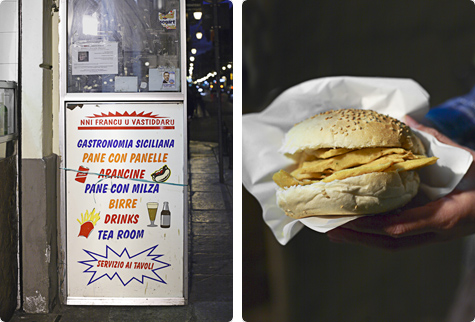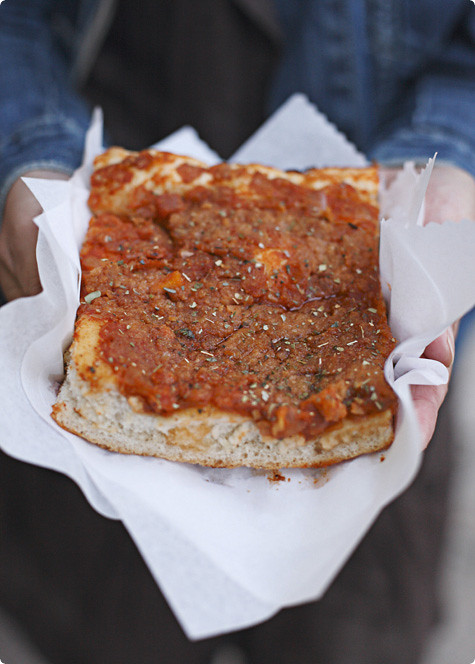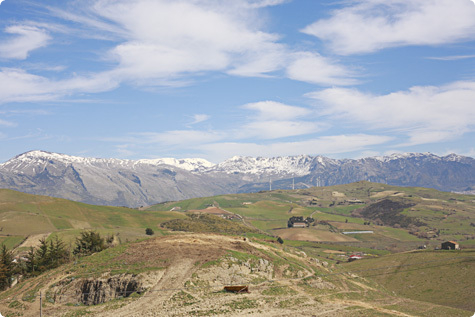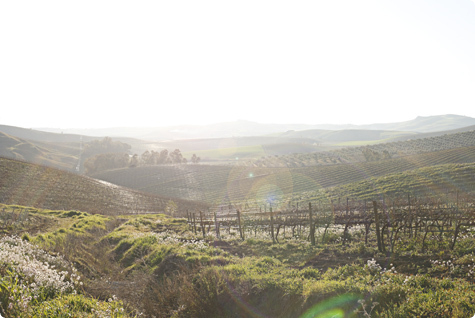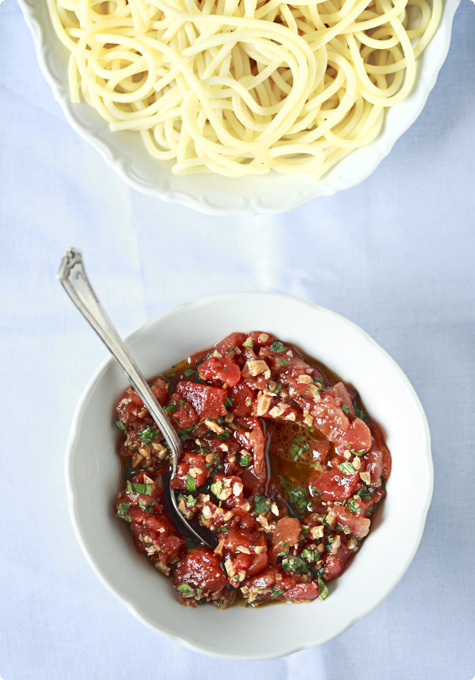
August already. How did that happen?
However it did, it sure happened quick. One minute it was spring, with each long, languid day offering the promise of infinitely more to come, and the next it’s late August, and each warm breeze feels like the closing act. Even if the temperature hasn’t dipped too much yet, the evenings are becoming noticeably shorter, and as early pumpkins and apples start appearing beside the peaches, corn and tomatoes, I know it’s just a matter of time before we’re digging out the parkas and extra socks.
Of course it’s still a while before that happens, and when I stop to think I remember how the end of summer means the beginning of fall, a season I love almost as much. This year the sense of August as the harbinger of an ending seems particularly acute, though, since, well… it is. Not to over-dramatize things, since all the changes are positive and welcome, but as much as I’m looking forward to them, beginning something new always means ending something old, and when that something old has brought good things, leaving it behind is hard.
In my case, the end of this month is bringing about some significant life changes. We’re moving again, for starters, though this time luckily not across hemispheres, but just across the country—to Stuttgart, capital of the southwest. Known as an industrial powerhouse, and cradle of the formidable German automobile industry, I’ve been thrilled to learn that Stuttgart is also Germany’s gastronomic capital. It makes sense, actually, as the city is located barely an hour from both France and Switzerland, is smack in the middle of German wine country and is surrounded by the highest concentration of Michelin-starred restaurants in the republic (61 in the region, at last count). I daresay we couldn’t have chosen better if we’d tried.
And then there’s the reason for the move. I’ve been offered a job down there, a really, really great job, one that combines my background in language and writing and public relations and offers me the chance to work for one of the most well-known and well-respected companies in Germany. It’s like nothing I’ve done before, but somehow it’s perfect for me—well, as perfect as something that doesn’t involve food can be. It will mean big changes, though, in everything from how I spend my days to what I spend them thinking about to how much time and energy I’ll have to potter around the kitchen at their end—to, of course, how blogging will fit into the picture.
But let’s not worry about that now. First, I have a promise to fulfill. Last time we spoke I told you I’d share a treat from Sicily with you, and I don’t intend to let you down. In fact, it would be criminally negligent of me to not share this particular recipe with you, since it offers one of the best vehicles for sweet, juicy late-summer tomatoes (i.e. the kind in your markets NOW) ever devised. In fact, I’ll even go out on a limb and suggest it makes one of the best pasta sauces ever devised. I’ve seriously been tempted to spend this month eating nothing else.
Now here’s where I have to admit a bit of a convoluted background to this dish. Ostensibly it’s a slight modification of the famous pesto trapanese, a tomato, basil and almond sauce hailing from the northwestern city of Trapani. I actually didn’t eat this in Sicily—I wasn’t near Trapani, and it wasn’t the right season anyway—but shortly after I returned home I found the recipe in one of the newest Sicilian cookbooks on my shelf, Made in Sicily by London restaurateur and author Giorgio Locatelli. What initially caught my eye in Locatelli’s version was his substitution of mint for the more common basil, something I may have been dubious about once upon a time, but certainly not since traveling to Sicily this spring and falling in love with the intense Sicilian mint that perfumes everything there. The second thing that struck me was that instead of grinding everything together to the usual homogenous mass that characterizes a pesto, he left the various components chunky and distinct, juicy nuggets of tomato interrupted by splinters of almond and curls of fresh mint.
Or at least that’s what the luminous photo next to the dish showed. And for some reason, after admiring that photo and quickly scanning the list of ingredients, I ran off to make the dish without, well, actually reading the recipe itself.
It was, however, as spectacular as I expected: the sweet bursts of tomato, like half-melted rubies clinging to the hot pasta, the toasty crunch of almonds, the peppery slick of olive oil, and the ribbons of spicy mint, which is so unexpectedly sublime with tomato and garlic, so clean and fresh and bracing, I might never touch a sprig of basil in their presence again.
Unfortunately it was also wrong, as I discovered after I’d made the sauce this way two or three times. Don’t ask me what the photographer was smoking, but the instruction was clear as day in the recipe, when I actually bothered to read it: grind everything to a paste in a mortar.
Oops. But by then it was too late; I had fallen so in love with my accidental version and its rustic, toothsome chunks that I simply couldn’t fathom doing it any other way. And since it’s the version I love, it’s the version I’m giving you—though to nip any confusion in the bud I’ve changed the name from ‘pesto’ to to the more generic ‘salsa’. Even if you’re a fan of the original I urge you to give this one a try; though I should warn you, you may soon find yourself trying to sneak tomatoes, almonds and mint into nearly everything you eat. Not that this qualifies as a problem in my book.
I just hope the good people of Trapani will forgive me for my freewheeling approach to their gastronomic heritage. And I hope you, dear readers, will forgive me for another stretch of silence around here. On the bright side, a belly full of spaghetti should tide you over nicely.
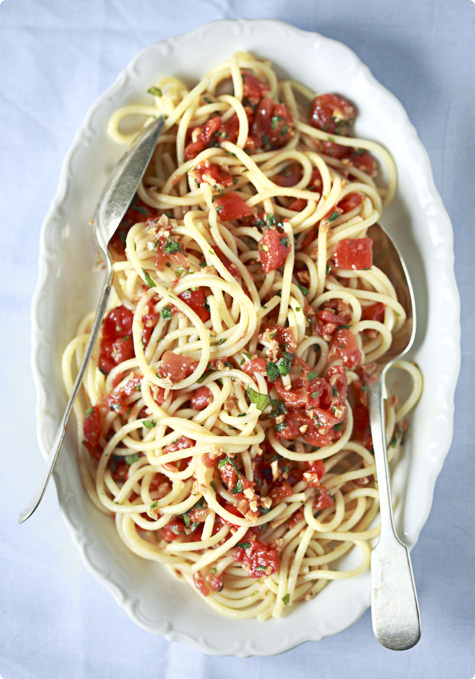
Spaghetti with Salsa Trapanese
You may have noticed that I mentioned making this dish shortly after returning from Sicily early this spring, long before any edible tomatoes were on the market in this hemisphere. I was, in fact, so eager to try it that I gave it a shot with canned San Marzanos, drained, rinsed, seeded and chopped. I have to say, it honestly wasn’t half bad—in fact I’d rate it as significantly better choice than out-of-season (i.e. hothouse) fresh tomatoes. Of course candy-sweet summer heirlooms are in a league of their own, but should you find yourself craving this in the off-season, there’s no shame in substituting the contents of three 400g/14oz cans for the amount of tomatoes given here.
p.s. I know peeling tomatoes is a chore, but please don’t skip this step or the pieces won’t get that luscious, half-melted texture when they hit the hot pasta.
p.p.s. This sauce certainly doesn’t only go with pasta; try it over sauteed fish or chicken too.
Source: adapted from Giorgio Locatelli’s Made in Sicily
Serves: 4-6
500g (1 generous lb.) juicy, ripe plum or heirloom tomatoes
75g (1/2 cup) blanched almonds
1-2 cloves garlic, mashed or grated on a fine Microplane
40g (1 large handful) fresh mint leaves, shredded
50ml (scant 1/4 cup) olive oil
salt and freshly-ground pepper, to taste
pinch of sugar
500g/1 lb. dried spaghetti
Cut a shallow ‘X’ in the bottom of each tomato and place them in a deep heatproof bowl. Bring a kettle of water to a boil, then pour enough over tomatoes to submerge them all. Leave for 10-20 seconds, or until the skin at the cut part of the tomatoes starts to curl. Drain and fill the bowl with cold water. When the tomatoes are cool enough to handle, peel off the skin. Cut them in half, scoop out the seeds with a teaspoon, and dice the flesh. Sprinkle lightly with salt and let drain in a sieve while you prepare the other ingredients.
Toast the almonds in a 350F/175C oven for 8-10 minutes, or until golden. Cool, then chop medium-fine.
Combine the chopped almonds and tomatoes in a large serving bowl with the garlic, mint and oil, mashing the tomatoes slightly with the back of the spoon, and season to taste with more salt, pepper and a pinch of sugar. Let sit while you cook the pasta, or up to several hours.
Bring a large pot of well-salted water to a boil and cook the spaghetti just until al dente. Drain it well, and immediately add to the bowl with the sauce, tossing to coat. Correct the seasoning if necessary, and serve.
I don’t feel this needs any cheese, but Locatelli suggests that if you want some, dice some young pecorino and toss it in before serving.

